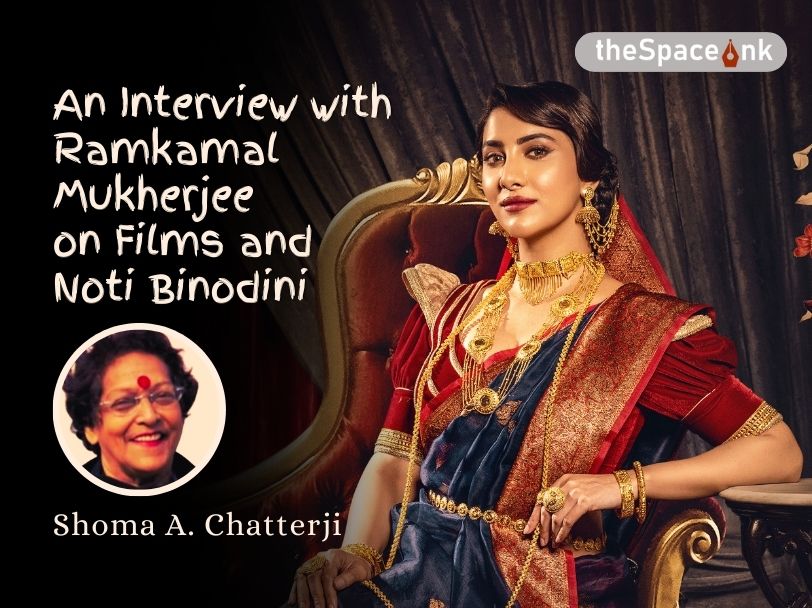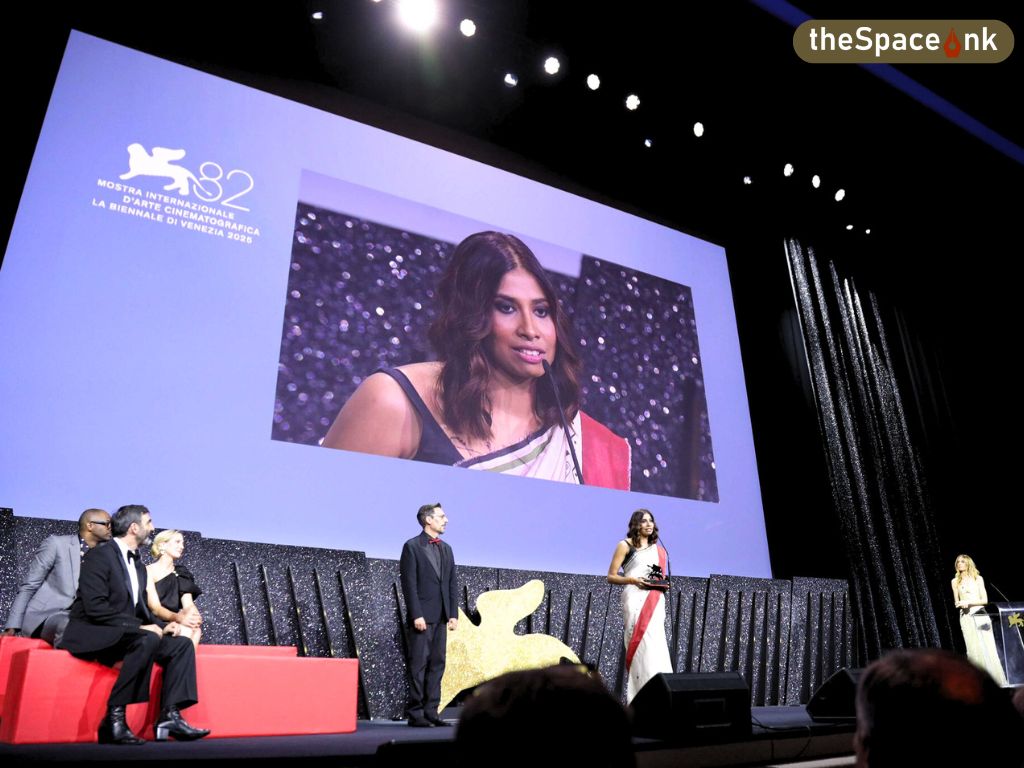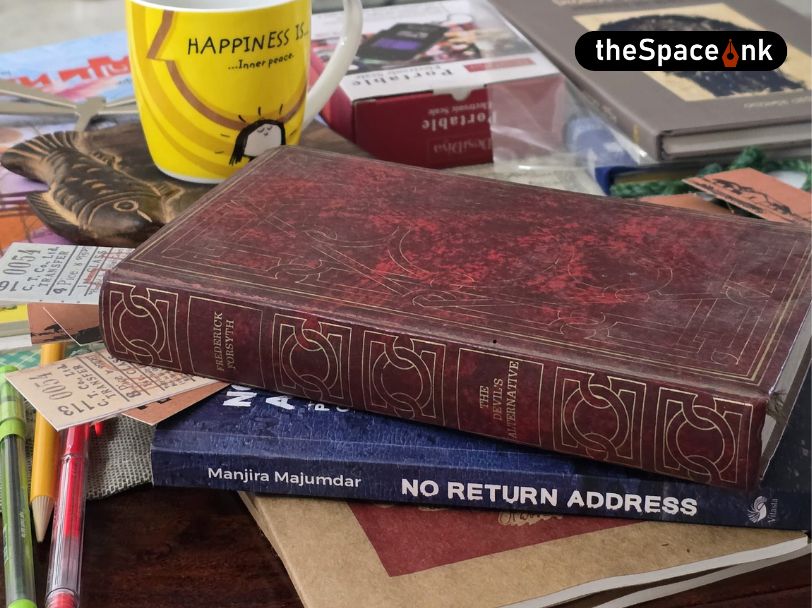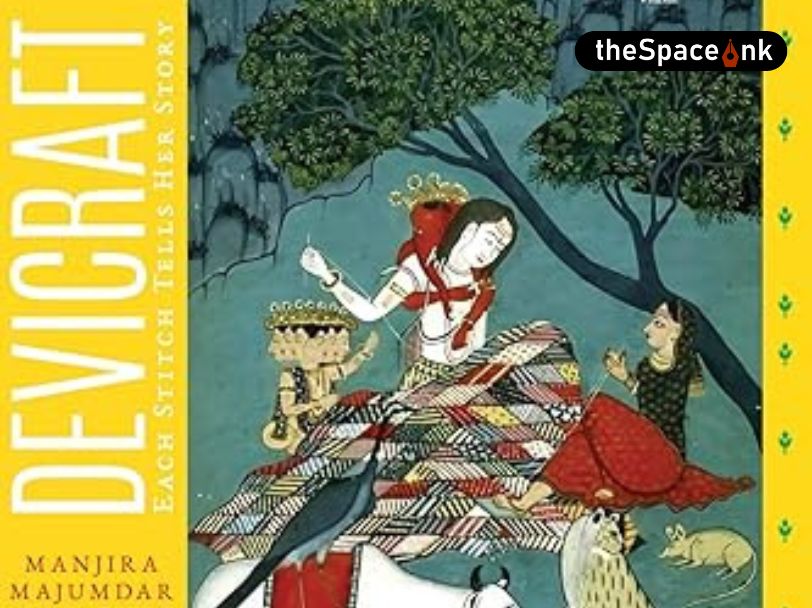I have known Ramkamal from the late 1990s when he was, I guess, in his late teens and I was new to Kolkata. I loved the way he was forever eager to learn, to invent and to grow in all directions. He proved me right when he shifted base, almost overnight, to Mumbai after a single meeting with the media giant, the late Nari Hira, who had introduced a completely new style in film journalism with Stardust. Soon, Ramkamal enlarged his journalistic world by slowly becoming the editor of Stardust and then Mumbai Mirror.
He also writes biographies whenever he can. His first on Hema Malini entitled Beyond The Dreamgirl was launched in Kolkata where the star had come down for the event. He then wrote on Sanjay Dutt followed by Mithun Chakraborty. Today, he is flying back and forth from Mumbai, where he now lives, to Kolkata, his ancestral home for his first magnum opus in cinema – “Binodini: Ekti Notir Upakhyan”. He talks about this metamorphosis and on his shift in an open one-to-one.
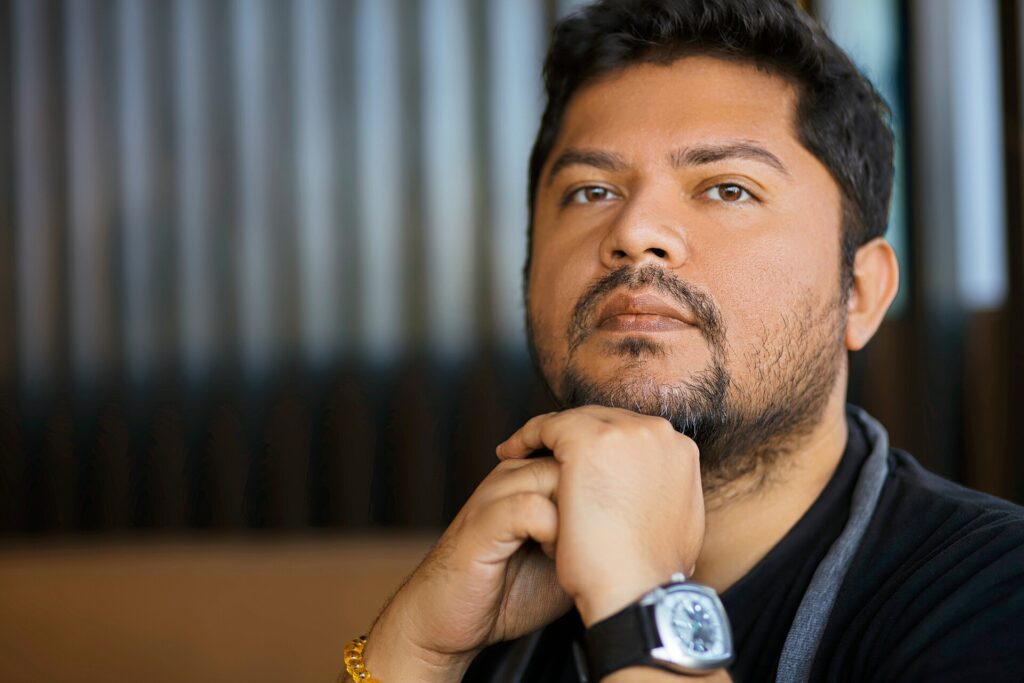
Film maker Ramkamal Mukherjee
SAC: Why the shift from writing to filmmaking?
R: Everything in my professional life has been spontaneous. Of course, when I began my work in Mumbai long ago, I really felt like a fish out of water. I was an ‘outsider’ and had to begin my career as a journalist all over again from scratch. Looking back, my foray into films, looked at in perspective, is just a switch from the print media to the audiovisual media, that is all.
I once created a record of sorts by interviewing the largest number of celluloid celebrities both from Bollywood and Tollywood for the then newly formed ATN Kolkata channel within a short time. But all that is in the past. While I was editor of Stardust, Rajshree Ojha invited me to assist her for her feature film Chaurahen, an anthology because I had assisted her for her TV serial Bin Kuch Kahe for Zee Entertainment. My first independent short film Cakewalk, a short film in Hindi, was produced by Assorted Motion Pictures under the auspices of Eisha Deo who played the main role in the film.
SAC: You made some more short films too. Right?
R: Yes. But before venturing independently, I learnt a lot while working for one full year with the team of Chaurahen and Bin Kuch Kahen as associate producer. Then I did Season’s Greetings, a short film as a tribute to the late Rituparno Ghosh. The film explored, with great restraint, a homosexual relationship with a real hijra stepping into the film. Then I made Rickshawalla and Ek Dua, both short films which won both accolades and awards.
SAC: You say you consider the late Pritish Nandy as your chief mentor in films. Why?
R: Yes. I worked under him in Pritish Nandy Communications for some time. He taught me everything I needed to learn as a filmmaker. He taught me how to study a script, decide on the casting, the legal paperwork before a film hits the floor and I worked with his organization till his daughter Rangita Nandy took over.
SAC: What made you choose to make your feature film debut with Binodini, Ekti Notir Upakhyan, a historical?
R: I am a student of history. My parents took me to watch all the historical films from Harishchandra to The Ten Commandments. So, I wished to make my feature film debut with a historical subject. I am still fascinated by Joan of Arc which, according to me, is the best internationally recognized film on her, forever continuing the debate about whether she was a saint or a witch.
I love the Bollywood films Lagaan and Swadesh mainly because of their associations with history. So, I decided to make my debut with Noti Binodini first of all removing the “dasi” used as a suffix to her name and replacing it with “Noti.” During her time, only Brahmin ladies were allowed to use “Devi” as a suffix but in 2025, I felt it would be historically right to use “Noti” as a prefix to her name.
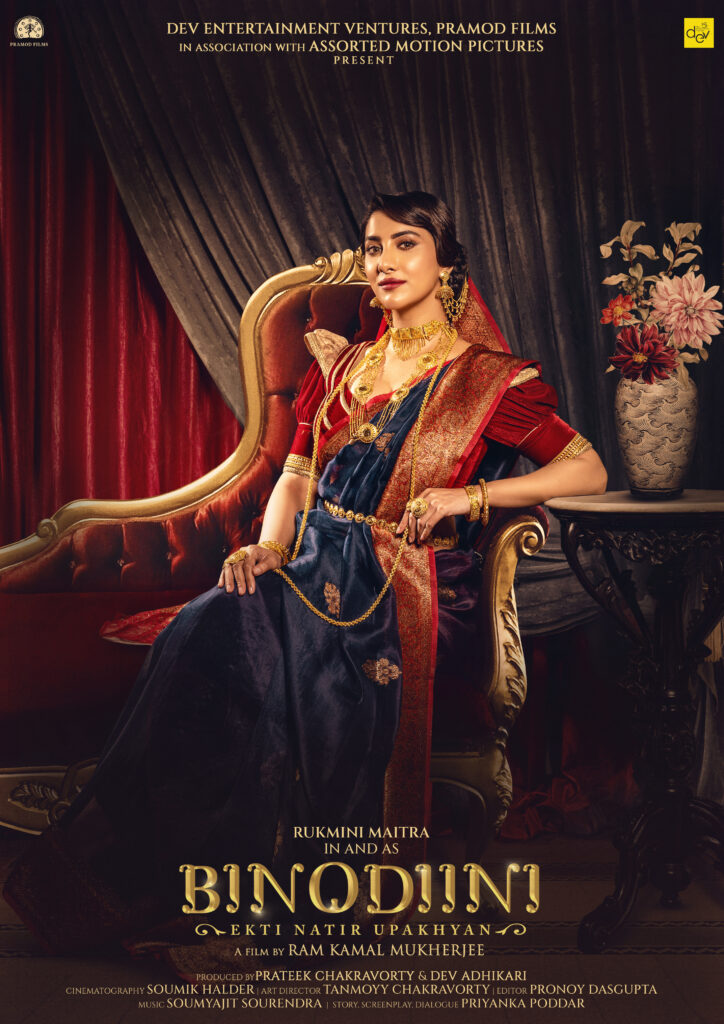
Film poster of Noti Binodini
But the teething problems were so many that I had begun to wonder whether I would be able to finish the film at all. First came the lockdown with Covid and everything came to a full-stop. Then, I went looking for a producer. Dev, the supremo of Bengali cinema, stepped in as “presenter” and Prateek Chakraborty, the grandson of the hit Bollywood filmmaker Pramod Chakraborty stepped in to produce the film. This took a long time.
SAC: Why did the film take so long in making?
R: Firstly, the film could begin only in 2021. Then Rukmini, who was penciled in for the lead role, had to undergo a grueling training under actor Sudipta Chakraborty who is already playing the same role in Binodini Opera, a big hit now in theatrical circles in the city. The VFX took one full year and the computer graphics, aside from the VFX, took one more year.
So, the film took five full years in the making and some more till its release on January 23, 2025. The other occupational hazards do not merit mention here. I am now an “outsider” in Kolkata both as a filmmaker and as a citizen. So, naturally, I am facing both goose bumps and accolades. It is all in the game.
Also Read: Conversation With Shoma A. Chatterji on Her Latest Book
SAC: Tell us a little more about your casting since you are new to Bengali cinema, but you have managed to rope in a stellar cast from here for your film.
R: Kaushik Ganguly, who portrays Girish Chandra Ghosh, is a veteran director-cum-actor. But he insisted that when someone else is directing him, he leaves behind his directorial cloak and commits himself to his director. He has gone on record to state- “This is the best Binodini I have seen in my life.” Rahul Bose who plays Rangababu, had to create the character that was a symbol of all the “Babus” of that era put together. So, he just poured himself into a character he had not even heard of.
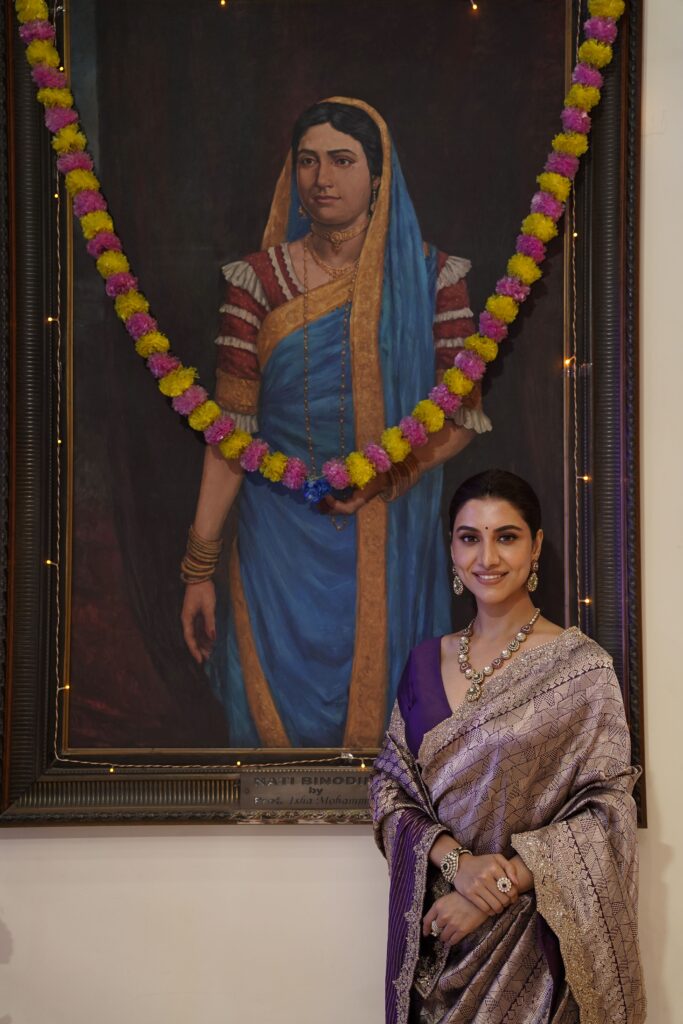
The actress standing next to an image of the real-life Binodini
Om Shahani who plays the Rajput prince, was introduced to me by Dev. I trained him to play the Rajput with the right accent in his Hindi dialogue which I wrote down myself. Chandreyee is a brilliant actress but terribly underutilized in Tollygunge. I chose her to portray Gangamoni or Golap and gave her to chew khaini instead of paan as a breakaway from traditional practices. I was fortunate enough to get Randeep Hooda’s make-up team so you see such a transformed Chandan Roy Sanyal as Thakur Sri Sri Ramkrishna. He had just lost his father who was a committed devotee of Ramkrishna.
SAC: Are you happy about how the film has turned out?
R: Of course, I am. But I am skeptical about getting a producer for my next film Draupadi which will also have Rukmini in the main role. But this will largely depend on the box office returns of Binodini. If it is a success, I will not want for producers. But if it is a commercial flop, it will be a problem. It is a different Draupadi we have conceived of which focusses on a long dialogue between Draupadi and Sri Krishna. The script is sourced back to Pratibha Roy’s Odiya novel Jaggaseni. This will be a kind of meeting point for Rituparna Ghosh and Sanjay Leela Bhansali.
SAC: Your next film after Binodini, named “Lakshmikantapur Local” is almost ready. What is it about?
R: Only a few days of shooting are remaining and it will be ready. It is about three domestic maids who take the Lakshmikantapur Local to travel to Kolkata every day. We look at the city and its families from the perspective of three such maids spanning three generations working in three families whose social status and degree of affluence differ.
The story is entirely mine and I have handled a solid acting cast. Among them are Kaushik Ganguly, Rituparna Sengupta, Paoli Dam, Chandreyee Ghosh, Rajnandini Dutta, Sayoni Ghosh, Indraneil Sengupta among others.
SAC: What do you think, is lacking in Bengali cinema today?
R: Bengali films need new directors with new thought and new stories. Otherwise, we will soon need to concentrate on the “apartment” variety of sitcoms we are witnessing across our TV channels today. The genre of religious and mythological films got killed mainly because the audience shifted to television. Otherwise, Bengal has dozens of such stories to fall back on such as Daksha-Yajna, Behula-Lakhinder, Sadhak Byamakhyapa,, Sita, Harishchandra and many more.
Image Courtesy: Author
Film
Shoma A. Chatterji is a freelance journalist, film scholar and author based in Kolkata. She has won the National Award twice, in 1991 and 2000. She has authored 26 published titles of which 14 are on different areas of Indian cinema. She holds two Masters Degrees and a Ph.D. in History (Indian Cinema). She has also won a few Lifetime Achievement Awards from different organizations over time.


